Why do we love popping bubble wrap, haptics or sound?
Abstract
This project investigates how haptics and sound contribute to the satisfaction that people feel from popping bubble wrap. Lots of people find popping bubble wrap satisfying, yet it is unclear where such satisfaction comes from; though it is clear that the perception of popping bubble wrap mostly comes from haptics and sound. There have been previous studies investigating how haptic and auditory cues affect the perception of stiffness as well as the roughness and pleasantness of surface textures. In this study, we aim to explain this common feeling from scientific perspectives, and hopefully shed light into other similar phenomena such as people’s obsessions in turning mechanical switches, feeling the clicks when turning knobs, etc. The study asked participants to rate their pleasantness levels (subjective rating) after popping virtual bubbles in combinations of different sound (no sound, popping sound, leaking sound) and haptic (no haptic, popping haptic, leaking haptic) conditions. The haptic feedback was provided by a haptic simulator with one degree-of-freedom (DOF), and sounds of popping bubbles were recorded samples. The hypotheses are that haptic and auditory cues both play important part in creating the satisfying feeling with the haptics being comparatively more important, and that incoherent haptic and auditory cues will have opposite effect, meaning that they would result in lower pleasantness level compared to lack of stimuli. The results from the experiment show that the average pleasantness level is highest when both types stimuli are present and coherent, and lowest when one or more types of stimuli are lacking. Although haptic and auditory cues both contribute to the pleasantness of popping bubble wrap, their importance varies based on participants’ experiences with haptic device.
Setup
Sound
There were 3 different pre-recorded sounds used in this experiment: two of them being the sound of bubble wrap getting popped, one of them being the leaky sound created when bubble wrap fails to pop properly. We used different popping sound to account for the difference bubble wraps might have.
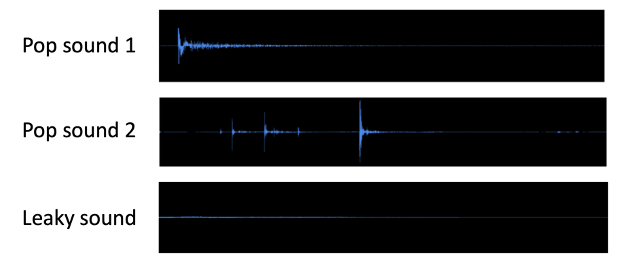
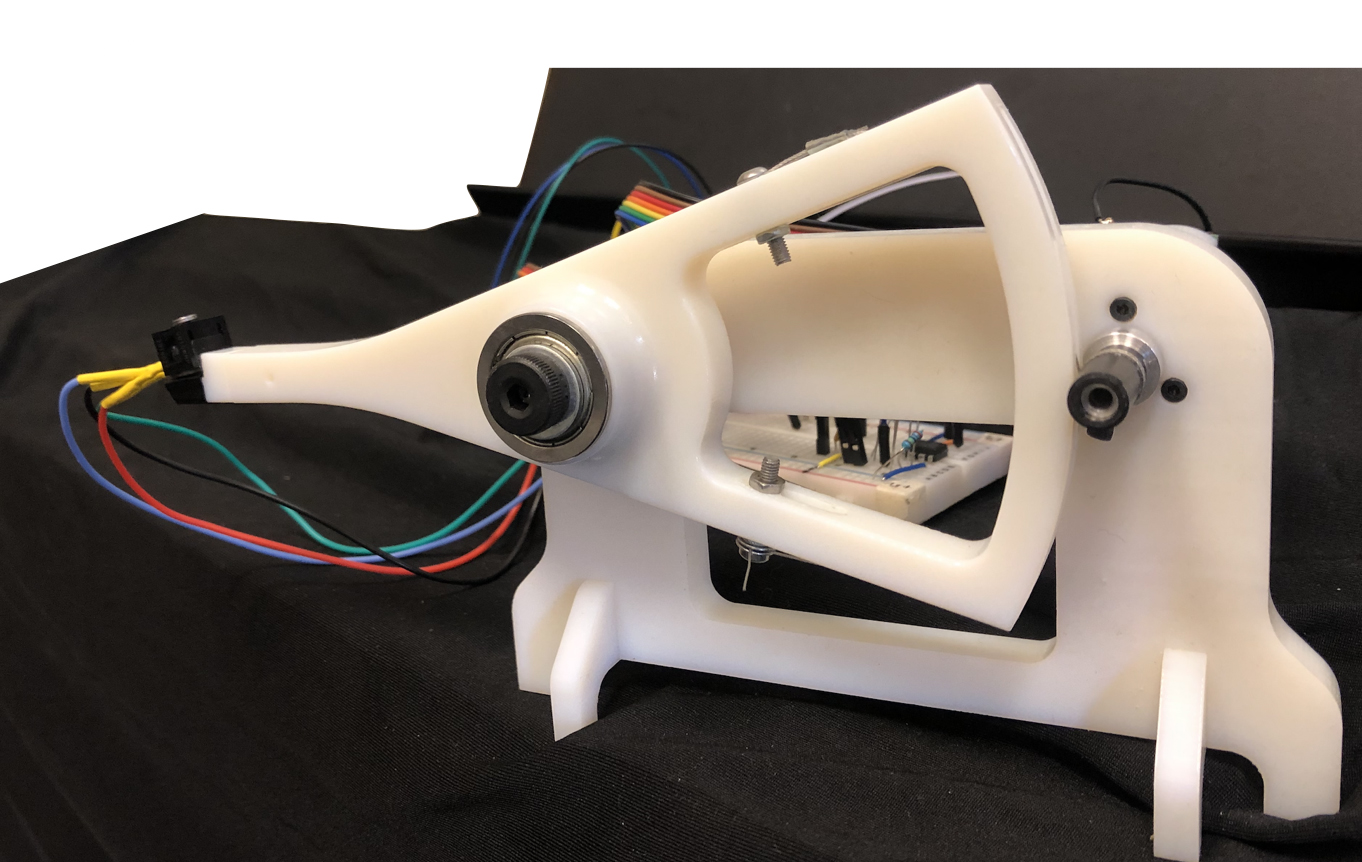
Haptics
The different haptic feedback profile (no haptic, popping, and leaking) were preprogrammed using Arduino. The popping feeling was created by a 3-stage non-linear force displacement profile similar as a button click, and the leaking feeling was created by a relatively linear and flat force displacement profile. More details on the hardware can be found here.
Results
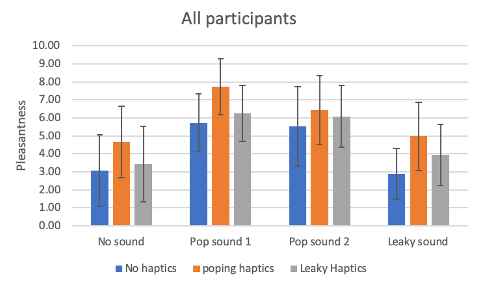
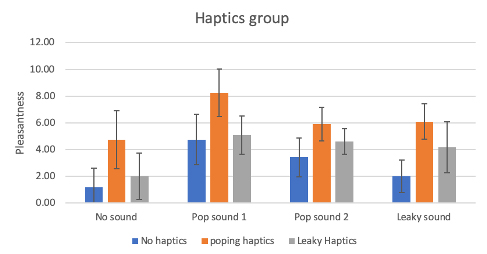
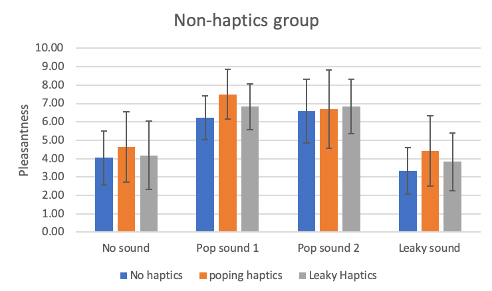
More Information
This project was developed as the final project for MUSIC 251 at CCRMA.
slide deck (pdf)